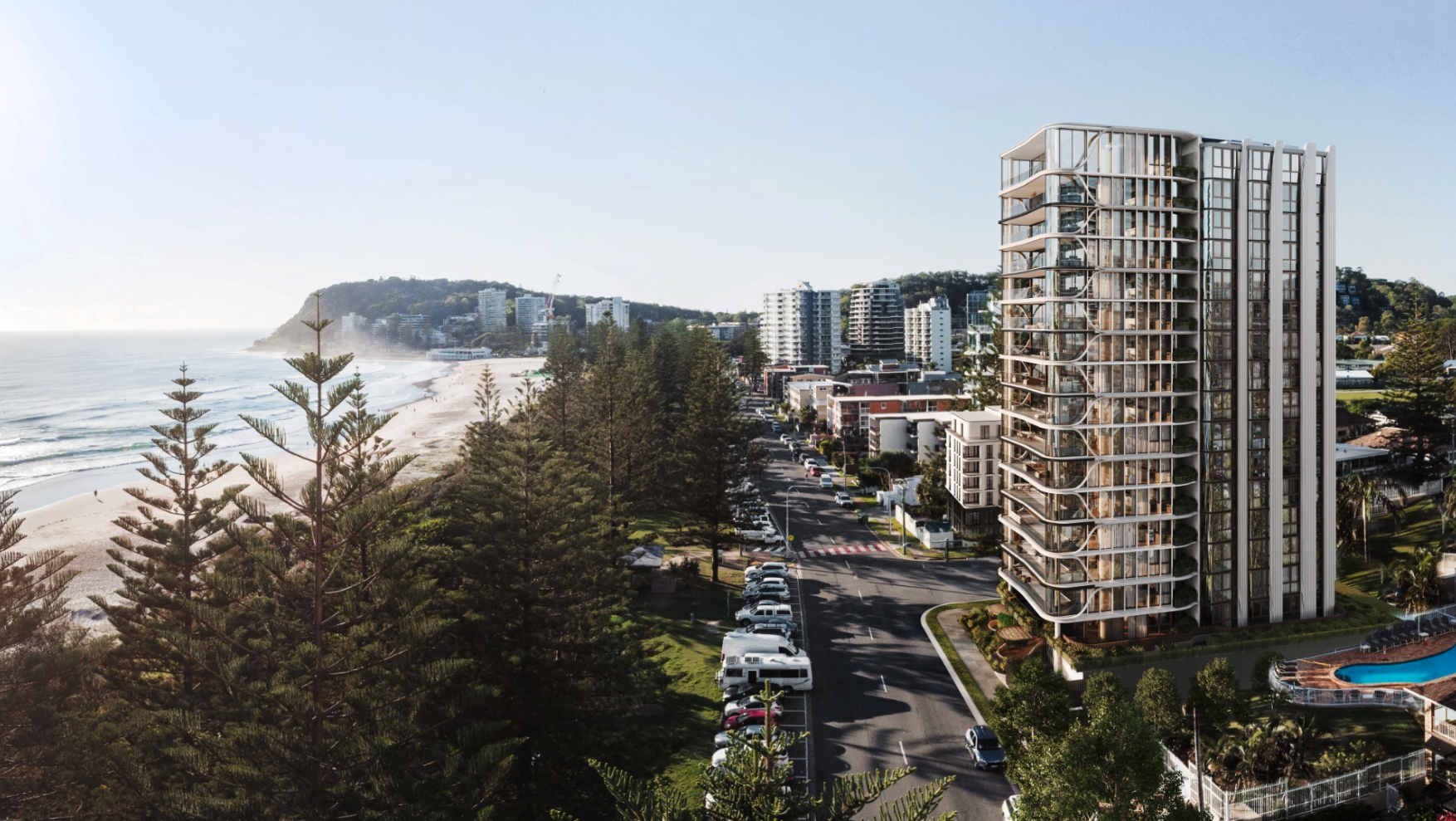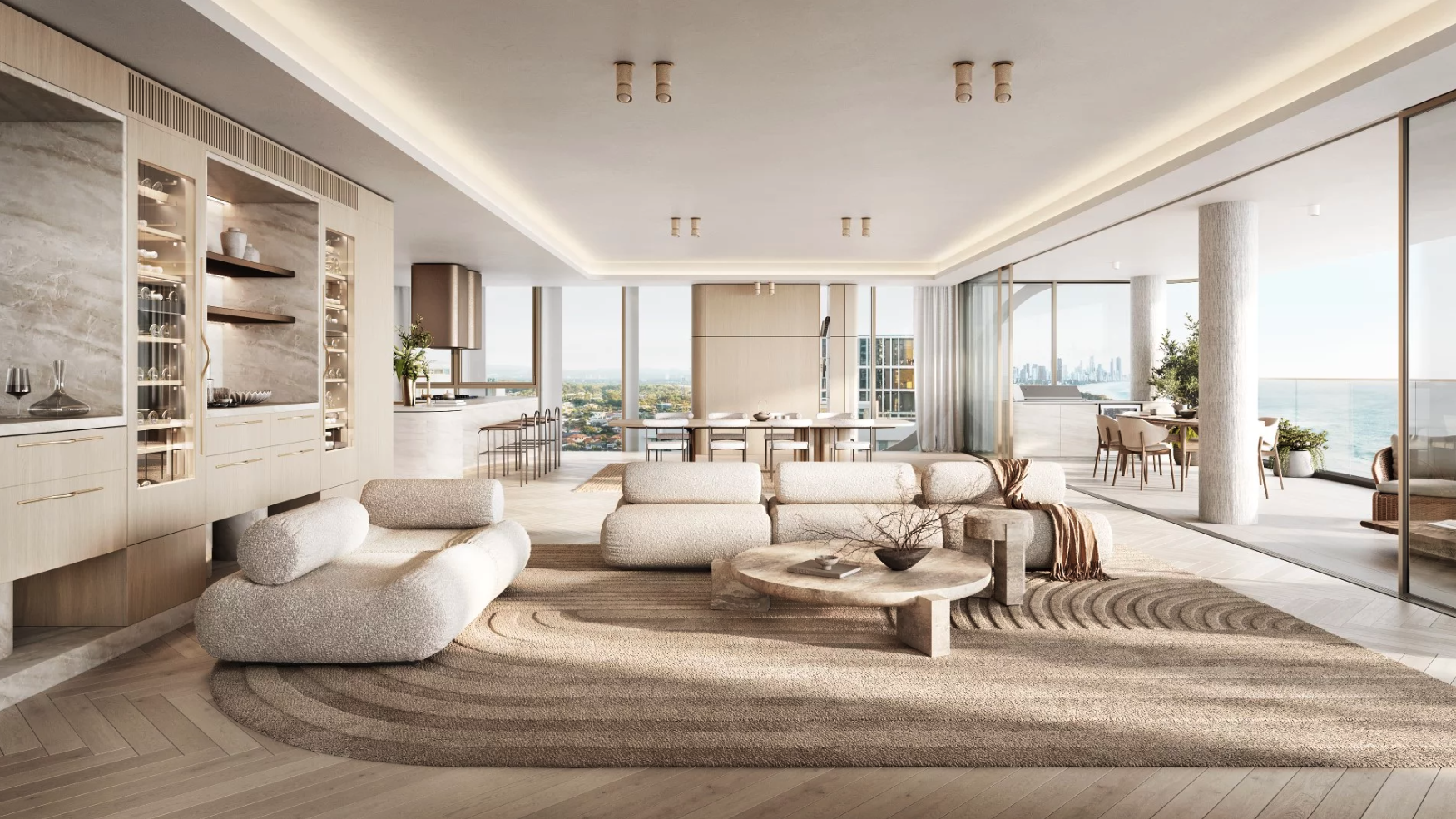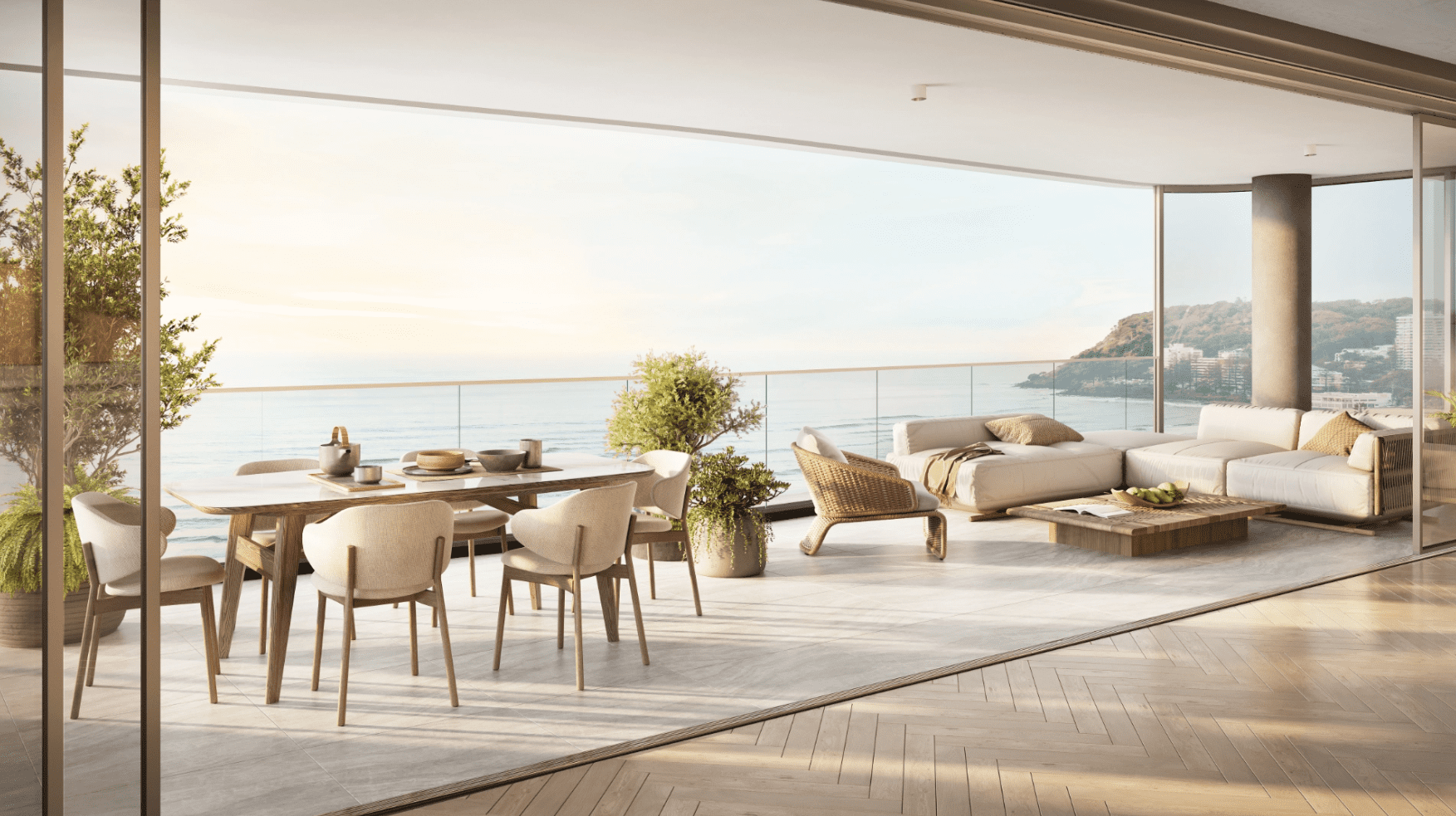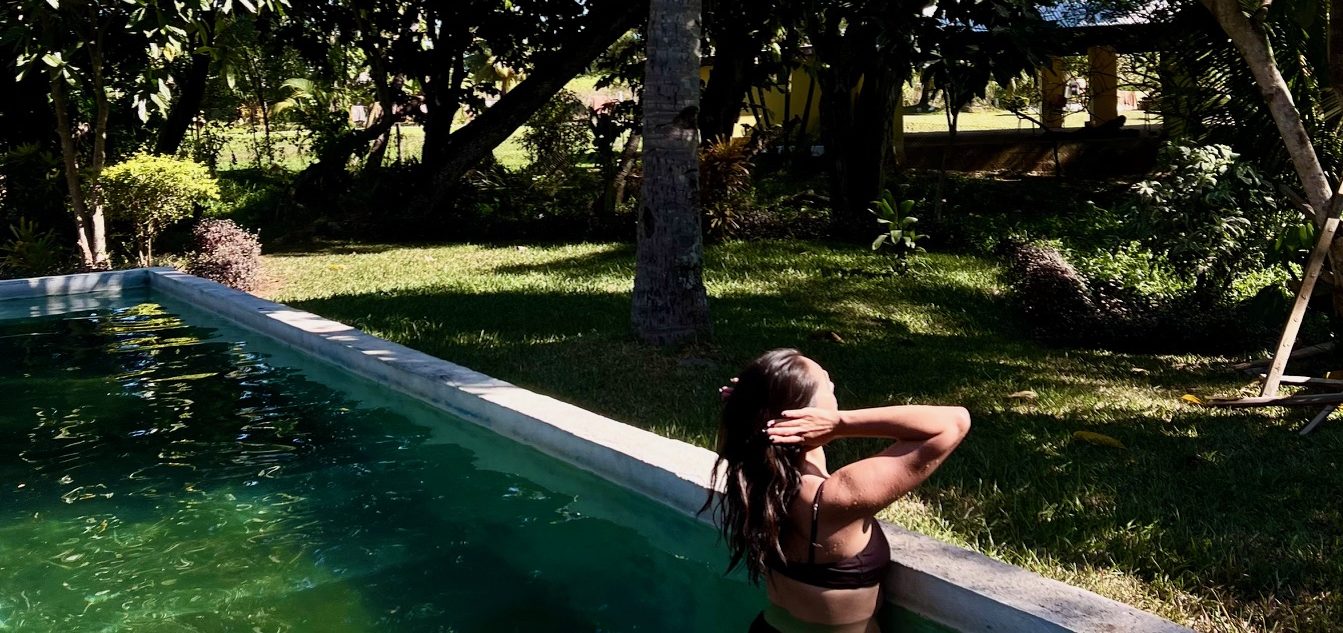WHY APARTMENT LIVING IS BOOMING IN BURLEIGH HEADS
Burleigh Heads is transforming into a luxury apartment hotspot, with One Burleigh leading a $5 billion wave of high-end coastal development.
Burleigh Heads, once a laid-back coastal enclave, is rapidly emerging as one of Queensland’s premier destinations for luxury apartment living.
With more than $5 billion in residential, commercial, and infrastructure projects underway, this southern Gold Coast suburb is experiencing a transformation that blends natural beauty with sophisticated urban development.
A significant contributor to this evolution is the surge in apartment investments, driven by escalating demand and impressive returns.
Recent data shows that apartment prices in Burleigh Heads have risen by 9 per cent over the past year. This upward trend underscores the suburb’s appeal to both investors and owner-occupiers seeking a blend of lifestyle and profitability.
Central to Burleigh Heads’ allure is its unique lifestyle offering. Residents enjoy pristine beaches, a vibrant dining scene, and a passionate sense of community. The suburb’s charm lies in its ability to offer a relaxed coastal atmosphere while providing the amenities and conveniences of urban living.
At the forefront of Burleigh Heads’ luxury apartment boom is One Burleigh, a boutique development by MAYD.

Located at 88 The Esplanade, this project includes 16 full-floor residences, each offering expansive oceanfront views and unparalleled privacy. Construction has started, with completion expected in Summer 2026/27.
The apartments feature four bedrooms, three bathrooms, two powder rooms, a private office, and a media room with a bar, spanning up to 381 square meters of indoor and outdoor living space.
Pricing for the remaining residences starts from $9.05 million, reflecting not only the premium quality and design of the apartments but also the growing demand for luxury coastal living in Burleigh Heads.
MAYD’s commitment to exclusive, boutique developments is clear in One Burleigh’s design and amenities. The project emphasises meticulous craftsmanship and a harmonious blend with the natural surroundings. Wellness amenities rivalling global retreats, including spa facilities and a grand lobby lounge, further enhance the living experience.
MAYD distinguishes itself in the luxury development landscape through its unwavering commitment to exclusivity and a deep understanding of the premium market’s evolving desires. Unlike developers who prioritise volume, MAYD focuses on “carefully chosen, handcrafted projects,” ensuring each development is a bespoke masterpiece tailored to its environment and clientele.

MAYD’s Director, Todd Mould, emphasises the company’s dedication to creating sanctuaries that offer more than just a place to live. “One Burleigh is more than a residence; it’s a sanctuary that offers an exclusive lifestyle experience,” Mould said. He further notes the resilience of high-quality real estate investments, especially in times of economic uncertainty, highlighting the enduring value of such tangible assets.
This approach underscores MAYD’s unique position in the market, delivering developments that are not only architecturally and aesthetically superior but also aligned with the lifestyle aspirations of discerning buyers.
Early buyer interest in One Burleigh has been strong, with more than 50 per cent of apartments already under contract.
The success of One Burleigh reflects a broader trend in Burleigh Heads, where luxury developments are meeting the growing demand for high-end coastal living. As the suburb continues to evolve, it stands as a testament to the potential of combining natural beauty with thoughtful, innovative development.
For more information go to www.oneburleigh.com.au
Records keep falling in 2025 as harbourfront, beachfront and blue-chip estates crowd the top of the market.
A divide has opened in the tech job market between those with artificial-intelligence skills and everyone else.
The 2026 McGrath Report warns that without urgent reforms to planning, infrastructure and construction, housing affordability will continue to slip beyond reach for most Australians.
Australia’s housing market has reached a critical juncture, with home ownership and rental affordability deteriorating to their worst levels in decades, according to the McGrath Report 2026.
The annual analysis from real estate entrepreneur John McGrath paints a sobering picture of a nation where even the “lucky country” has run out of luck — or at least, out of homes.
New borrowers are now spending half their household income servicing loans, while renters are devoting one-third of their earnings to rent.
The time needed to save a 20 per cent deposit has stretched beyond ten years, and the home price-to-income ratio has climbed to eight times. “These aren’t just statistics,” McGrath writes. “They represent real people and real pain.”
McGrath argues that the root cause of Australia’s housing crisis is not a shortage of land, but a shortage of accessibility and deliverable stock.
“Over half our population has squeezed into just three cities, creating price pressure and rising density in Sydney, Melbourne and Brisbane while vast developable land sits disconnected from essential infrastructure,” he says.
The report identifies three faltering pillars — supply, affordability and construction viability — as the drivers of instability in the current market.
Developers across the country, McGrath notes, are “unable to make the numbers work” due to labour shortages and soaring construction costs.
In many trades, shortages have doubled or tripled, and build costs have surged by more than 30 per cent, stalling thousands of projects.
Need for systemic reform
McGrath’s prescription is clear: the only real solution lies in increasing supply through systemic reform. “We need to streamline development processes, reduce approval timeframes and provide better infrastructure to free up the options and provide more choice for everyone on where they live,” he says.
The 2026 edition of the report also points to promising trends in policy and innovation. Across several states, governments are prioritising higher-density development near transport hubs and repurposing government-owned land with existing infrastructure.
Build-to-rent models are expanding, and planning reforms are gaining traction. McGrath notes that while these steps are encouraging, they must be accelerated and supported by new construction methods if Australia is to meet demand.
One of the report’s key opportunities lies in prefabrication and modular design. “Prefabricated homes can be completed in 10–12 weeks compared to 18 months for a traditional house, saving time and money for everyone involved,” McGrath says.
The report suggests that modular and 3D-printed housing could play a significant role in addressing shortages while setting a new global benchmark for speed, cost and quality in residential construction.
Intelligent homes
In a section titled Weathering the Future: The Power of Smart Design, the report emphasises that sustainable and intelligent home design is no longer aspirational but essential.
It highlights new technologies that reduce energy use, improve thermal efficiency, and make homes more resilient to climate risks.
“There’s no reason why Australia shouldn’t be a world leader in innovative design and construction — and many reasons why we should be,” McGrath writes.
Despite the challenges, the tone of the 2026 McGrath Report is one of cautious optimism. Demand is expected to stabilise at around 175,000 households per year from 2026, and construction cost growth is finally slowing. Governments are also showing a greater willingness to reform outdated planning frameworks.
McGrath concludes that the path forward requires bold decisions and collaboration between all levels of government and industry.
“Australia has the land, demand and capability,” he says. “What we need now is the will to implement supply-focused solutions that address root causes rather than symptoms.”
“Only then,” he adds, “can we turn the dream of home ownership back into something more than a dream.”
From mud baths to herbal massages, Fiji’s heat rituals turned one winter escape into a soul-deep reset.
An opulent Ryde home, packed with cinema, pool, sauna and more, is hitting the auction block with a $1 reserve.




















